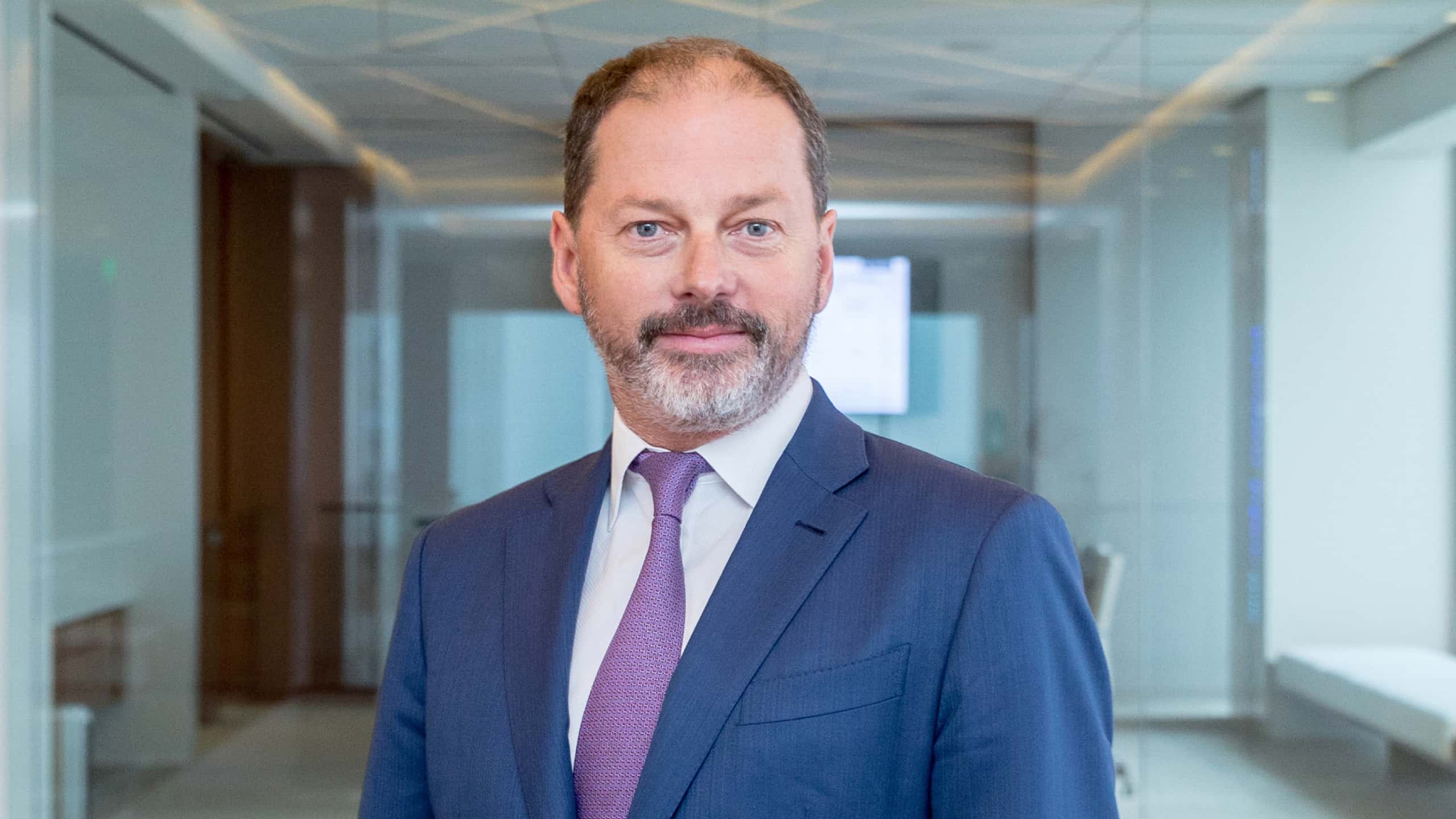Text on screen: John Valtwies, Account Manager
Valtwies: Rob, 2023 was characterised by some unexpected resilience in the face of dramatically higher policy rates. What's our read on this environment and how does it shape our outlook for 2024?
Text on screen: Rob Mead, Co-head of APAC Portfolio Management
Mead: Yes, you’re right John. We haven't seen economies do this well under that sort of rate hike cycle. I hate to use the words ‘this time is different’, but I guess in some respects it is.
So monetary policy lags are clearly taking a little longer post-pandemic. And we'd put that down to things like the availability of fixed rate borrowing, labour hoarding because of the uncertainty around the pandemic, issues around immigration and labour supply, excess savings, all of these things are impacting the lags of monetary policy.
So we do think this time is slightly different. But we also say, if you look at the starting point today of how much policy tightening has taken place, accompanied by the levels of core inflation, economies have never navigated a soft landing.
So when it comes to our outlook, and for all investors that are participating today, it really means that you should be at least thinking about minor recessions in terms of your outlook as a stress test or even using a mild recession as your base case.
Valtwies: Rob, the resilience piece is certainly attributed to the lags and it's probably fair to say that we expect the impact of those higher interest rates to continue to play out over the next few months. Given this uncertainty, how should investors be thinking about the forward- looking environment? What are the actions they should be taking?
Mead: Sure, I think 2024 is going to be the year of recalibration of relative asset prices, because we did see a pretty robust backdrop for risk assets in ‘23. But given that there's so many anomalies, it's very unusual to see so many anomalies.
So the first thing to think about is that central banks have done almost all the heavy lifting that's required. Maybe they are done. And for core bonds as an asset class, the most important driver of return is the starting yield.
So when you think about yields of 6% or thereabouts, it's a pretty good indicator of what to expect going down the track. But the most important thing for ’24 is that the bond market is finally playing its role to keep every other asset class honest.
So it sets a hurdle for taking risk. You need to start earning a lot more than a 6% type investment to generate, or to justify, I should say, taking risk. And I think while rates were so low, a lot of the other asset classes had started to get complacent and lazy.
There was never meant to be a herd of unicorns. You know what I mean?
These things are anomalies. And so when we look across asset classes now, the relative expected returns from risk assets versus bonds has narrowed to the point that investors, if they're still underweight defensive asset classes, underweight core bonds, they should be moving now.
Now's the time to get back to square and maybe start to look to be overweight the core bond asset class.
Valtwies: Rob, there's a few points that I think we need to expand on. You spoke about bonds recalibrating other asset classes. You spoke about bonds keeping asset classes honest.
What does this mean? What are the action items for investors?
Mead: Well, I think there's a few things for all investors to think about. The first one is, have all asset classes repriced to this new environment? And the very clear answer is no.
So at one moment in time, you've got things like listed property trusts gated, yet you've got other illiquid assets still priced at par. It's the time to act now. If you can sell some things at par, you probably should.
The second part of that equation is that in a ‘higher for longer’, or we're really changing
that or paraphrasing that to be ‘high for longer’, we're already high, doesn't have to go higher, but in a ‘high for longer’ environment, highly levered borrowers need to prepare for the worst.
If you're thinking about a short term interest rate storm, that's the wrong mindset.
You need to be thinking about rates staying on the tighter side of neutral for an extended period. So prepare for that.
And then the final thing is for asset classes that have repriced and there are many.
When we look across the global private credit market, structured finance, things like corporate restructurings now offering potential returns in the low to mid-teens, they're compelling.
So there's really great opportunities out there, but only for the savvy investor.
You need to be you need to be very active and thinking about your overall portfolio.
Valtwies: Rob, we've been working together for a number of years. It's probably the first time I've heard you so upbeat on the outlook given the reset in policy rates we've seen.
For investors we look at core bonds and it's straightforward in that yields are significantly higher, 6 to 7 percent when looking at high quality bonds in very liquid daily priced structures.
Under any scenario, there is attractive yields on offer. For more savvy investors who are open to some of the more unique opportunities that we see across private credit markets and restructuring, we think there's great potential for outsized returns. And in the year ahead, we're here to help. We thank you for your ongoing support and looking forward to working with you in the next few months.

